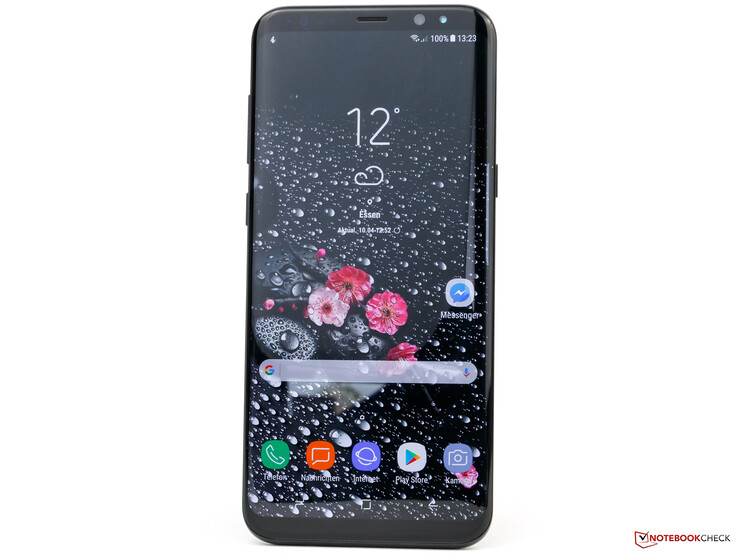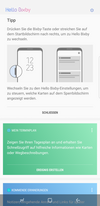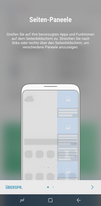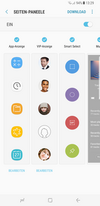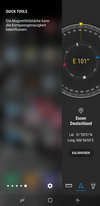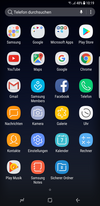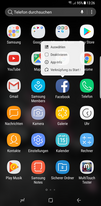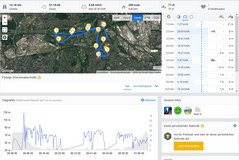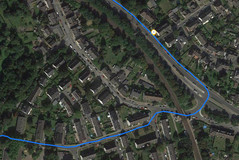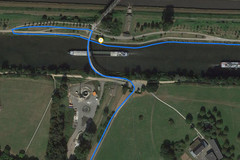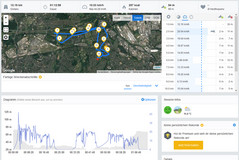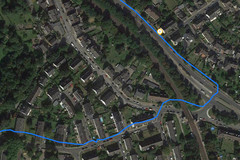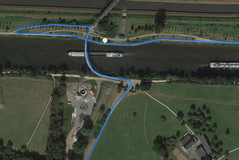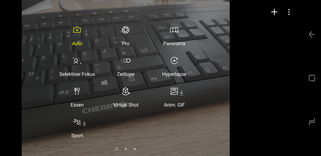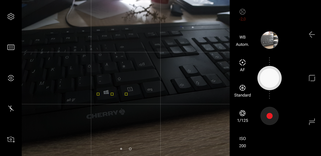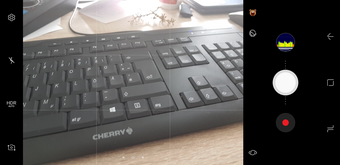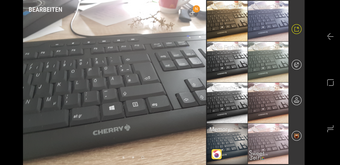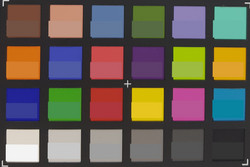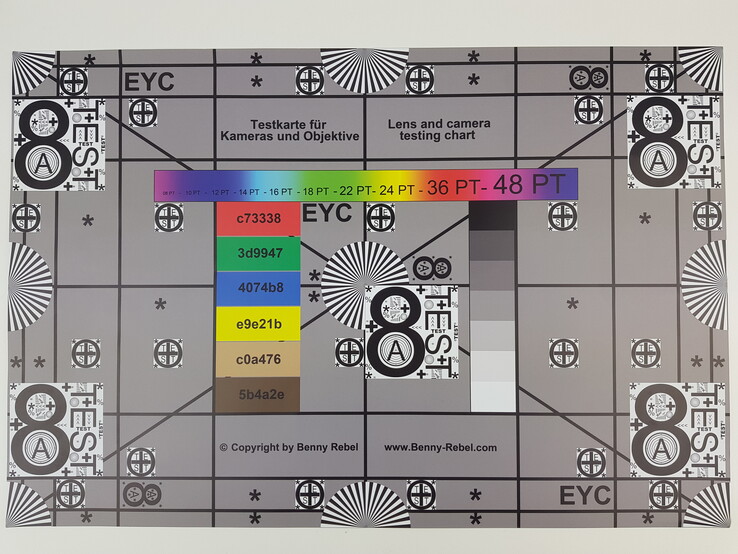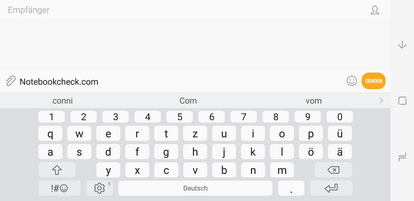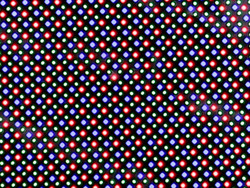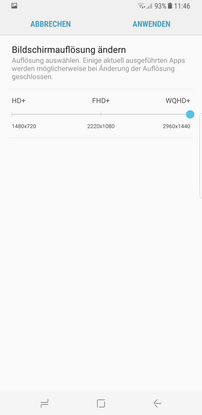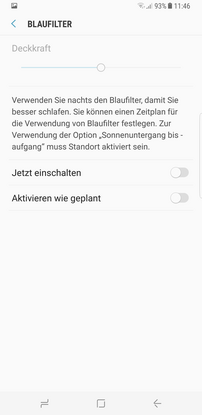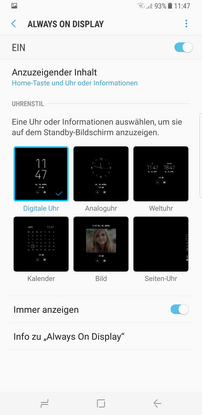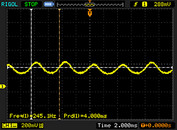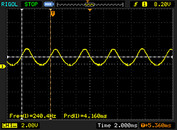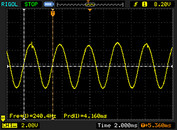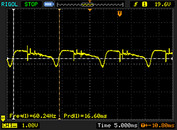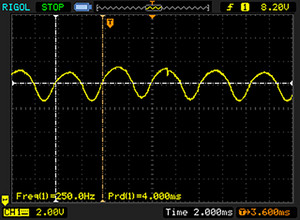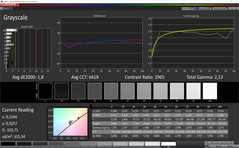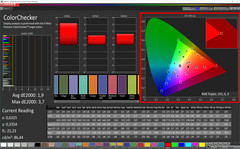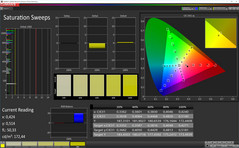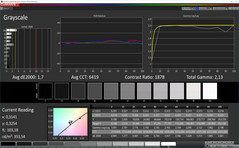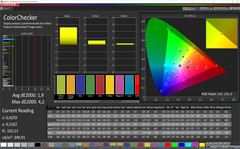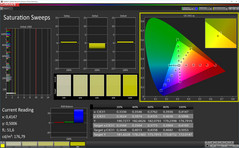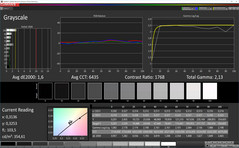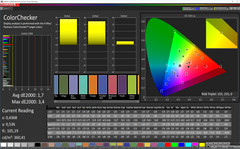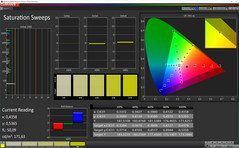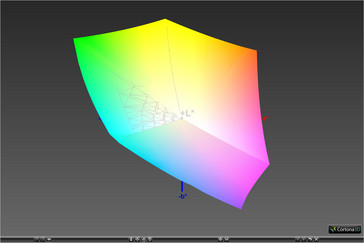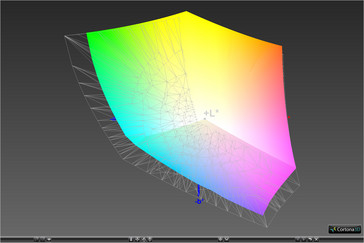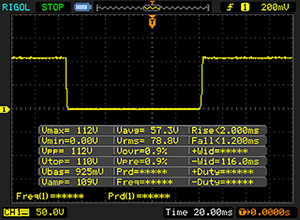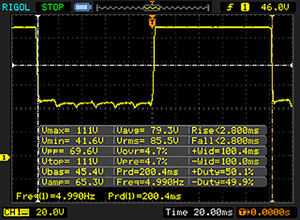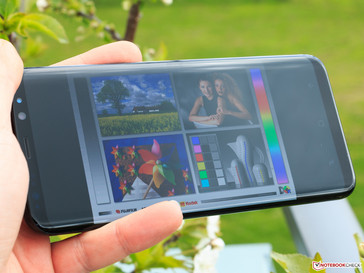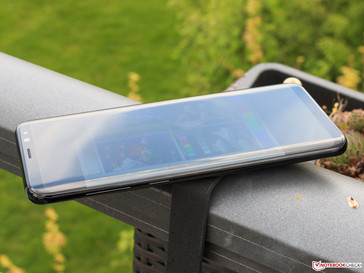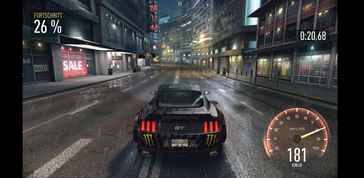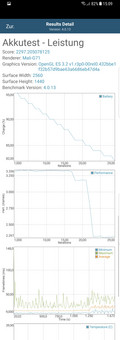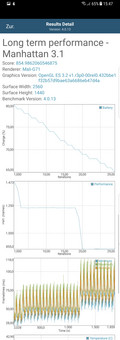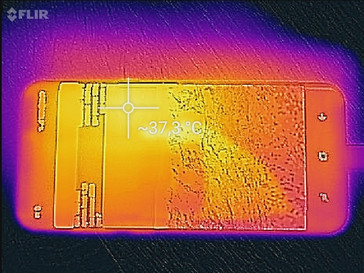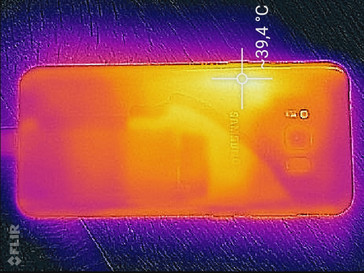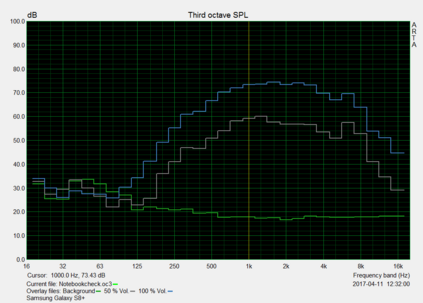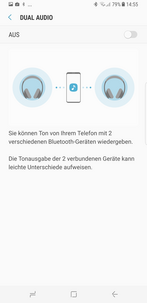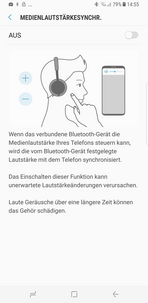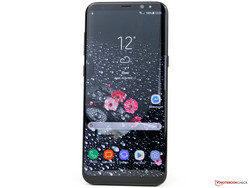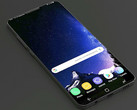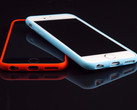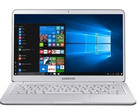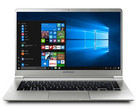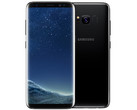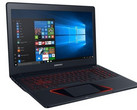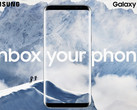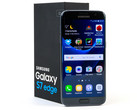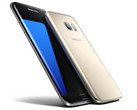Samsung Galaxy S8+ (Plus, SM-G955F) Smartphone Review
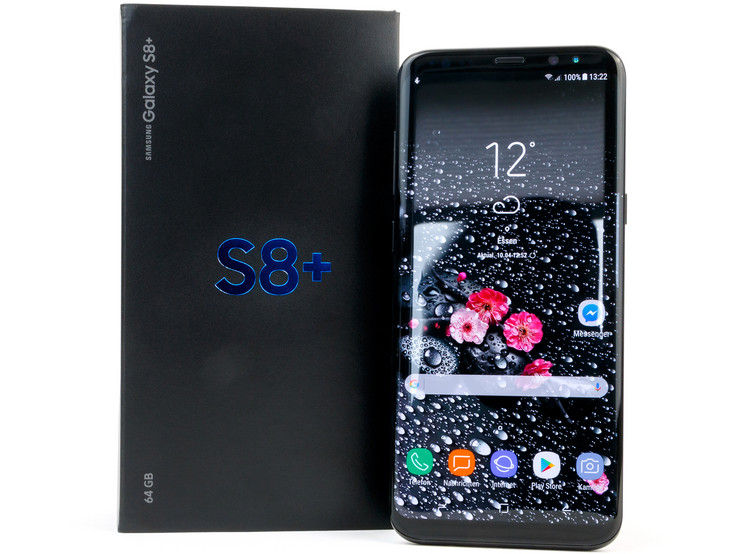
For the original German review, see here.
The Samsung Galaxy S8+ (Plus) is the successor to the Galaxy S7 Edge, which was the best smartphone we reviewed last year. The new model follows the footsteps of the previous model and sets new benchmarks.
The Galaxy S8 Plus is the larger smartphone from the S8-series with a panel diagonal size of 6.2-inches. This sounds enormous, especially with the 5.5-inch screen of the Galaxy S7 Edge in mind. However, the size is a result of the new aspect ratio, so the smartphones are getting longer and offer more visible screen content, but they are still easy to hold thanks to the narrow construction. The small Galaxy S8 has a 5.8-inch screen, a smaller battery (3000 mAh) and is 100 Euros (~$107) less expensive. However, the differences stop there.
Our test model is powered by the new Samsung Exynos 8895 SoC, which is already manufactured in a 10-nm process. You also get 4 GB RAM and 64 GB internal UFS 2.1 storage. The latter can be expanded by up to 256 GB via microSD. The Plus version also features a 3500 mAh battery and is once again protected against water and dust according to IP68. Samsung now also uses a USB Type-C port and equips the smartphone with numerous sensors. A new feature is the Iris scanner, which we already know from the Galaxy Note 7. Other small highlights include Gigabit LTE as well as Bluetooth 5.0, and the Wi-Fi performance is supposed to be much better as well. Samsung's own voice assistant Bixby is only available for Korean and English customers right now.
Samsung's smartphone is ambitious and a big challenge for the rivals. The comparison devices include the long-term competitors Apple iPhone 7 Plus, Sony Xperia XZ, HTC U Ultra, Huawei Mate 9, LG G6, Lenovo Moto Z and the Google Pixel XL.
Update 6/12/2017: Samsung has released a firmware update for the Galaxy S8+. Details can be found in the section on firmware updates below.
Case
The rounded display edges are now standard for the new S models, but they are not as steep as on the Galaxy S7 Edge. The Galaxy S8 Plus almost looks frame-less compared to the previous model, because the panel glass now almost sits flush with the aluminum frame. The bezels at the top and bottom are also much slimmer than before, so you get the impression that you only hold a display at first. Samsung really pulled off a great design with an excellent screen-to-body ratio.
The tactile feeling of the Samsung Galaxy S8+ is also great, but it still appears very sturdy. Both the front and rear are completely made of Corning Gorilla Glass 5, which attracts fingerprints, but it is easy to clean. It will move on a slightly angled surface when you put it on the screen. This is prevented by a small frame around the camera on the rear, which is otherwise flush with the case. The metal frame makes the case very sturdy, and it supports the noble design of the S8+ in combination with the glass elements. The smartphone is also very resistant against twisting attempts, and it requires some force to provoke creaking. There is no criticism for the gaps, either.
The device is once again certified according to the IP68 standard and therefore protected against water and dust. The battery is integrated and cannot be removed by the user. The card tray is made of plastic and can accommodate a Nano-SIM as well as a microSD-card. There is no dual-SIM model.
Connectivity
It is probably easier to list what features the Samsung Galaxy S8+ (Plus) does not include at this point. Samsung once again waives an infrared transmitter to control your devices at home. You cannot use it as an FM radio, either, but there is still the chance this feature will be made available via update – similar to the predecessor.
You can expand the storage with an optional microSD-card. It supports all common SDXC modules with a storage capacity of up to 2 TB, but the maximum size available right now is 256 GB. It is not possible to format the microSD-card as internal storage or transfer apps to the card due to the performance differences between the internal and external storage.
The USB port has a modern Type-C connector and supports the USB standard 3.1 (Gen.1) as well as OTG, so you can attach peripherals or storage devices via adapter. It is also possible to charge other devices with the S8+ and the port supports video output via DisplayPort 1.2.
The sensor equipment is more than comprehensive and includes a fingerprint scanner as well as an Iris scanner among others. You also get a heart-rate monitor at the back. Besides NFC, you also get Bluetooth 5.0. The latter is brand-new and was heavily improved in terms of range, transfer rates as well as power consumption. Samsung does not advertise the class of the module, so we cannot give you any specifics. However, it is now possible to drive two Bluetooth speakers at the same time. The aptX codec ensures good sound, but the newer aptX HD is not supported.
Software
Samsung ships the Galaxy S8+ with Google's Android 7.0 Nougat in combination with Samsung's UI 8.1. This is a visible evolution compared to the previous Grace UI. The app drawer was waived completely, but you can now reach an overview for all apps with a vertical stripe across the home screen. Familiar functions like the Edge bar or the game launcher are once again included, just like Samsung's own app store. Apps from Microsoft and Facebook are also preinstalled; they cannot be removed completely, but only deactivated.
The security patch level (March 1, 2017) is up to date at the time of the review. It remains to be seen whether Samsung will provide frequent updates.
Firmware Updates
This section is meant to keep you up to date about firmware updates released by Samsung for the Galaxy S8+.
Update 6/12/2017: Samsung has released a new firmware, NRD90M.955FXXU1AQEB, promising improvements in Bluetooth and SD card reader stability and reliability. In addition, Google's security patches have been brought up to date: patch level 5/1/17.
Communication and GPS
The Samsung Galaxy S8+ leaves a good impression in terms of connectivity. The Wi-Fi module of the smartphone supports the IEEE 802.11 standards a/b/g/n/ac in 2.4 as well as 5 GHz networks, which is common for a device in this price range. It also supports VHT80 MU-MIMO as well as 1024 QAM (10-bit square amplitude manipulation). The latter in particular is supposed to improve the transfer rates and the stability.
The Galaxy S8+ actually reaches very high transfer rates for a smartphone in the test with our reference router Linksys EA8500. The values are very good when the device receives data, but the Google Pixel XL and the iPhone 7 are even faster in this respect. The highlight is the send performance, because the Galaxy S8+ manages a great result of 656 Mbps and sits at the top of the ranking for smartphones. The dampening is excellent in close proximity to the router at -43 dBM (2.4 GHz) and -30 dBM (5 GHz). The dampening is stronger when we move away from the router and is only -71 up to -79 dBM (depending on the orientation of the smartphone) at a distance of 12 meters (and one internal wall). It even drops to -86 dBM when the smartphone is lying flat on a solid surface. The performance is still sufficient for the streaming of HD videos.
However, our test model did have issues with 5 GHz networks from time to time. We did not manage to establish a stable connection with a Devolo dLAN 1200+ Wi-Fi ac. The network was recognized and the connection was established but immediately dropped, which started a reconnecting process. We did not have these problems with the EA8500, so there does not seem to be a general problem with this frequency.
The Samsung Galaxy S8 Plus can access mobile Internet via quad-band GSM, six 3G bands or via modern Gigabit LTE (downstream: up to 1 Gbps, upstream: up to 150 Mbps). Samsung unfortunately limits the device to a specific region and the test model only supports 11 LTE bands. This is completely sufficient for Europe, but we would have liked to see a global coverage considering the high price.
| Networking | |
| iperf3 transmit AX12 | |
| Samsung Galaxy S8 Plus | |
| Apple iPhone 7 (Klaus I211) | |
| Google Pixel XL 2016 | |
| Samsung Galaxy S7 Edge | |
| LG G6 | |
| Huawei Mate 9 | |
| iperf3 receive AX12 | |
| Apple iPhone 7 (Klaus I211) | |
| Google Pixel XL 2016 | |
| Samsung Galaxy S8 Plus | |
| LG G6 | |
| Samsung Galaxy S7 Edge | |
| Huawei Mate 9 | |
The Samsung Galaxy S8 Plus can locate its position via satellite networks (GNSS) GPS, Glonass, BeiDou, and Galileo. It is nice that all GNSS are actually recognized and the location is very quick both outdoors as well as indoors. The accuracy was right away down to four meters outside the building and then leveled off at two meters – excellent.
We also compare the performance with the Garmin Edge 500 on a short bicycle ride. The difference between the two devices is just 10 meters after the 12 km-long track. A great result for the Galaxy S8 Plus, which also holds up in a detailed analysis, because we can only see minor deviations and the smartphone is sometimes even more accurate than the bicycle navigation system. We did not notice any limitations for navigation in a car, either.
Telephone Functions and Voice Quality
The phone app of the Samsung smartphone is similar to the default Google app and the design was just slightly customized. The handling should not be a problem for any user.
We are convinced by the voice quality. There are no problems when we use the smartphone at the ear, because both sides can enjoy clear voice quality. The speaker is also usable in quiet environments. We heard our call partner very well, which is also the case for the Galaxy user, even though the voice echoes too much. The provided AKG headphones also left a good impression. Our call partner sounded a bit dull due to the emphasis on low frequencies, but there are otherwise no problems. The microphone of the headset in particular works well indoors, but it cannot really filter wind sounds outdoors. The noise suppression of the Galaxy S8 Plus also works well, but loud voices are a problem.
We also noticed that the Galaxy S8 Plus tends to produce some static in close proximity to DECT-capable devices. The electromagnetic shielding could be better.
Cameras
Samsung improved the front camera of the Galaxy S8 Plus. It now has an 8 MP sensor with autofocus as well as an aperture of f/1.7, so it captures a lot of light. Videos can be recorded in Full HD (1920x1080 pixels). The preloaded beauty filter offers numerous settings. Besides the skin color and the shape of the face, you can also change the size of the eyes. There are many other filters or you can just download them. Samsung also preinstalls 3D animations, which adjust to the picture and some of them are animated. We like the results and they also work well in environments with low lighting.
Bixby Vision is another new feature, which can easily be activated by a small icon. The camera is supposed to analyze objects and text, so you can edit them. It is even supposed to collect information about the product via Internet or translate texts. Unfortunately, this did not work very well. The smartphone was not able to give us shopping recommendations, and Bixby Vision did not even recognize the product information for the Galaxy S8+. Texts had many gaps, so translations were useless. The idea itself is very good, but Bixby Vision still needs improvements.
The specs of the main camera did not change compared to the previous model. It is still a 12.2 MP dual-pixel sensor with a pixel size of 1.40 μm. The aperture did not change at f/1.7, either, and you also get an optical image stabilizer (OIS). Samsung supposedly improved the software. The actual pictures look great, just like they did on the Galaxy S7 Edge. The results are even a little brighter in low-light situations and the edges are a bit sharper than before. However, these differences are only noticeable when you enlarge the pictures.
You can also use a manual mode once again with settings for the white balance, light sensitivity (ISO 50 - 800), exposure (1/24000 - 10s) and adjust the focus manually. It is also possible to store RAW pictures in the Pro mode, so Samsung did not change a lot. Even the issues are still there, because the Live-View mode only works up to an exposure of one second, before the view and the result do not match anymore.
The video mode is also identical to the Galaxy S7 models, which means you can record at 3840x2160 pixels (Ultra HD @30 fps, up to 10 minutes at once). The quality is still very good, but Samsung unfortunately missed the opportunity to improve the functionality. Great features like the automatic chase function of the auto-focus and HDR are still not available in Ultra HD or at 60 frames per second. A look at the spec sheet of the Exynos 8895 shows that the ISP of the SoC can handle much more, including Ultra HD at up to 120 fps. This means Samsung is still number one in general, but it cannot increase the technological advantage.
We also checked the camera of the Samsung Galaxy S8 Plus under controlled lighting conditions. The results were not altered afterwards. The picture of the X-Rite ColorChecker PassPort shows rich colors, but they are still comparatively natural. The sensor also uses a pretty warm white balance. Green and red colors are also more saturated than others.
The Galaxy S8 Plus also leaves a positive impression on the test chart. The picture is very sharp in the center, which hardly suffers towards the edges. The color transitions and the signs on the colored surfaces are also very well captured.
Accessories and Warranty
The box of the Samsung Galaxy S8 Plus (black) includes a black modular power adapter (9.0 V, 1.67 A; 5.0 V, 2.0 A), a corresponding USB cable (Type-A to Type-C), two OTG adapters (Type-C to Type-A and Type-C to Micro-USB), a SIM tool, an AKG in-ear headset with different-sized tips as well as several leaflets regarding security, warranty, and a quick-start guide.
Samsung also offers numerous accessories for its flagship model in its online shop. Besides the usual covers (most of them are already familiar from the predecessor), you also get external batteries as well as inductive quick chargers. There is now also a USB Type-C to HDMI adapter, which is supposed to manage Ultra HD. An optional Starter Kit includes an additional battery (quick-charge capable), a protective screen cover as well as a transparent cover. Samsung also launches DeX right for the launch of the Galaxy S8 models, which allows using the smartphone as a computer. The principle is similar to Microsoft's Continuum, but it shows Android as a desktop instead of Windows.
Samsung grants a two-year warranty for its product. The provided accessory is only covered by six months; the battery for 12 months.
You can purchase Samsung's Mobile care package when you buy the smartphone, which costs another 119 Euros (~$127). It covers damages like broken displays, fluid damages or battery defects for 24 months. Customers have to pay an additional payment of 10% of the retail price. One interesting aspect is that the warranty conditions state liquid damages are not covered:
The following points are now covered by the warranty: […] The product was exposed to any kind of liquids/chemicals and/or extreme temperatures, moisture or humidity.
This is a bit irritating considering the advertised IP68 certification against dust and water, and the customer has to rely on Samsung's goodwill in such a case.
Please see our Guarantees, Return policies and Warranties FAQ for country-specific information.
Input Devices and Handling
The capacitive touchscreen of the Samsung Galaxy S8 Plus is protected by Corning Gorilla Glass 5 and provides very good gliding capabilities. There are no problems with the accuracy and the responsiveness, either. Samsung uses its own keyboard layout, which has a simple design, makes word predictions and supports swipe gestures. It is also possible to install other layouts from the Google Play Store.
The physical smartphone buttons are well-built and integrated. You get the power button, the volume rocker, and a button for Bixby. The latter also launches an overview with upcoming events, weather information, news, and many more when you hit it while the smartphone is locked.
The home button from the previous model is gone. Samsung now placed it underneath the display instead; it is a pressure-sensitive sensor. The other two Google buttons are now onscreen buttons. This works very well in practice. The home button is missing, so the fingerprint scanner moved to the back and now even supports a swiping gesture to launch the notification center. Samsung obviously copied this from Huawei models like the Mate 9, even though the functionality is not as comprehensive. The fingerprint scanner itself is quick and reliable, but we do not really like the position on the Galaxy S8+. We often confused the fingerprint scanner with the camera lens, and the sensor is also tricky to reach depending on the orientation of the smartphone. The same applies for the heart-rate monitor, which can also be used to trigger the front camera. It is unfortunately almost impossible to find with the finger.
The Samsung Galaxy S8 Plus also includes other security features besides the fingerprint scanner. The Iris scanner was already used for the Note 7 and is also reliable, but it unfortunately requires a second to unlock the device. The facial recognition is much faster, but less secure, and Samsung notes this aspect during the setup. Our colleagues from Heise were able to unlock the smartphone with a picture, so we would not recommend using this feature.
Display
The Samsung Galaxy S8 Plus has a 6.2-inch Super-AMOLED panel, which is called Infinity display by the manufacturer. It has a resolution of 2960x1440 pixels and a pixel density of 531 PPI, so content is razor-sharp. Besides the curved display edges at the two long edges, the corners are also round this time, so the diagonal size drops to 6.1-inches depending how you measure it. The display size itself grows thanks to the new aspect ratio of 2.06:1 (18.5:9), but the panel surface is smaller compared to the popular 16:9 ratio. This is also shown by the following table. The display is still huge, even though the Huawei Mate 9 appears bulkier (5.9-inch, 16:9).
| Smartphone | Galaxy S8+ | 6.2 inches (16:9) | Galaxy S7 Edge | LG G6 | Huawei Mate 9 | iPhone 7 Plus | Phab 2 Pro |
|---|---|---|---|---|---|---|---|
| Panel surface | 97.56 cm² | 105.97 cm² | 83.39 cm² | 86.81 cm² | 95.96 cm² | 83.39 cm² | 112.92 cm² |
You can only use the full luminance of the Galaxy S8+ with the activated brightness sensor; we can measure up to 358 nits in the center on a pure white background with the manual control. If the sensor, which adjusts the luminance quickly, is working, we can measure up to 577 nits in the same scenario. The more realistic APL50 measurement with an even distribution of bright and dark content results in almost 800 nits. This is already an enormous result; our colleagues from DisplayMate even measured up to 1000 nits.
The brightness distribution is very even at 93% and the panel can show complete black due to the OLED technology, so the contrast ratio is theoretically infinite. An eye-protecting blue-light filter is also available, just like the Always-On display function from the predecessor.
The panel supports HDR content, which is already provided by streaming services like Amazon and Netflix. It promises higher dynamic range and richer colors.
Our test model of the Samsung Galaxy S8+ was adjusted to a lower screen resolution of 2220x1080 pixels by default. This saves power, but you should check the settings when you want to enjoy the best picture quality of the excellent screen.
| |||||||||||||||||||||||||
Brightness Distribution: 93 %
Center on Battery: 560 cd/m²
Contrast: ∞:1 (Black: 0 cd/m²)
ΔE Color 1.7 | 0.5-29.43 Ø5
ΔE Greyscale 1.6 | 0.57-98 Ø5.3
99.87% sRGB (Argyll 1.6.3 3D)
81.57% AdobeRGB 1998 (Argyll 1.6.3 3D)
92.3% AdobeRGB 1998 (Argyll 2.2.0 3D)
99.3% sRGB (Argyll 2.2.0 3D)
83.2% Display P3 (Argyll 2.2.0 3D)
Gamma: 2.13
| Samsung Galaxy S8 Plus Super AMOLED, 2960x1440, 6.20 | Samsung Galaxy S7 Edge Super AMOLED, 2560x1440, 5.50 | Huawei Mate 9 IPS, 1920x1080, 5.90 | Apple iPhone 7 Plus IPS, 1920x1080, 5.50 | Google Pixel XL 2016 AMOLED, 2560x1440, 5.50 | Lenovo Moto Z AMOLED, 2560x1440, 5.50 | HTC U Ultra SLCD 5, 2560x1440, 5.70 | |
|---|---|---|---|---|---|---|---|
| Screen | 1% | -81% | 3% | -83% | -21% | -149% | |
| Brightness middle | 560 | 554 -1% | 696 24% | 557 -1% | 402 -28% | 485 -13% | 470 -16% |
| Brightness | 562 | 552 -2% | 680 21% | 553 -2% | 408 -27% | 490 -13% | 445 -21% |
| Brightness Distribution | 93 | 96 3% | 93 0% | 97 4% | 85 -9% | 92 -1% | 88 -5% |
| Black Level * | 0.42 | 0.35 | 0.22 | ||||
| Colorchecker dE 2000 * | 1.7 | 1.59 6% | 4.3 -153% | 1.4 18% | 4 -135% | 2.1 -24% | 5.5 -224% |
| Colorchecker dE 2000 max. * | 3.4 | 2.56 25% | 9.4 -176% | 3.1 9% | 10.1 -197% | 5.5 -62% | 11.9 -250% |
| Greyscale dE 2000 * | 1.6 | 2.01 -26% | 4.8 -200% | 1.3 19% | 3.2 -100% | 2.6 -63% | 7.6 -375% |
| Gamma | 2.13 103% | 2.01 109% | 2.33 94% | 2.21 100% | 2.19 100% | 2.23 99% | 2.2 100% |
| CCT | 6435 101% | 6321 103% | 7255 90% | 6667 97% | 7037 92% | 6843 95% | 7454 87% |
| Color Space (Percent of AdobeRGB 1998) | 81.57 | 82.12 1% | 63.1 -23% | 88.14 8% | |||
| Color Space (Percent of sRGB) | 99.87 | 99.98 0% | 99.83 0% | 100 0% | |||
| Contrast | 1657 | 1591 | 2136 |
* ... smaller is better
One typical characteristic of OLED screens is pulse-width modulation (PWM) to control the luminance. This is also the case for the Samsung Galaxy S8 Plus. We only noticed a flickering at 60 Hz at the full luminance; we can see PWM with the oscilloscope as soon as the panel brightness drops below 90%. The determined value of 250 Hz is not particularly high, and it never drops below 240 Hz and the amplitude curve is pretty flat, so the results of PWM-flickering should not be too bad. Very sensitive users, however, could have problems when they use the smartphone for longer periods.
Screen Flickering / PWM (Pulse-Width Modulation)
| Screen flickering / PWM detected | 250 Hz | ||
The display backlight flickers at 250 Hz (worst case, e.g., utilizing PWM) . The frequency of 250 Hz is relatively low, so sensitive users will likely notice flickering and experience eyestrain at the stated brightness setting and below. In comparison: 53 % of all tested devices do not use PWM to dim the display. If PWM was detected, an average of 17915 (minimum: 5 - maximum: 3846000) Hz was measured. | |||
OLED screens provide excellent contrasts and rich colors, which is also the case for the Samsung Galaxy S8 Plus. The panel has an adjustable mode, which automatically selects the right color balance in compatible apps. The predefined profiles Simple, Photo, and Cinema can also be selected manually. We checked the color accuracy of the different profiles with the spectrophotometer and the analysis software CalMAN. None of them shows real problems. The average DeltaE values are always below 3, which is the limit for visible deviations with the human eye. Only the iPhone 7 Plus shows more accurate colors, but it features a smaller color gamut in return.
The individual profiles differ quite a lot. Simple only covers sRGB and is less saturated, so the content looks pretty natural. Photo is a good fit for viewing pictures. It has a slightly warmer white balance and uses a reduced AdobeRGB gamut. Cinema almost covers the full P3 gamut completely and also provides the most accurate colors.
Display Response Times
| ↔ Response Time Black to White | ||
|---|---|---|
| 3.2 ms ... rise ↗ and fall ↘ combined | ↗ 2 ms rise | |
| ↘ 1.2 ms fall | ||
| The screen shows very fast response rates in our tests and should be very well suited for fast-paced gaming. In comparison, all tested devices range from 0.1 (minimum) to 240 (maximum) ms. » 9 % of all devices are better. This means that the measured response time is better than the average of all tested devices (21.5 ms). | ||
| ↔ Response Time 50% Grey to 80% Grey | ||
| 5.6 ms ... rise ↗ and fall ↘ combined | ↗ 2.8 ms rise | |
| ↘ 2.8 ms fall | ||
| The screen shows very fast response rates in our tests and should be very well suited for fast-paced gaming. In comparison, all tested devices range from 0.2 (minimum) to 636 (maximum) ms. » 13 % of all devices are better. This means that the measured response time is better than the average of all tested devices (33.7 ms). | ||
Samsung improved the viewing-angle stability of the Galaxy S8 Plus significantly compared to the previous model. The slight color hue, which is typical for OLED screens, is only visible at very flat viewing angles starting at around 100 degrees. It is combined with a slight brightness drop. Ghosting, glow, or clouding effects on the other hand are no problem for the Infinity display of the Galaxy S8+.
Performance
Samsung uses its own Exynos 9 chip for the European version of the Galaxy S8+ (SM-G955F), while U.S. models (among others) are equipped with the Qualcomm Snapdragon 835. The Exynos 8895 is one of the first 10-nm SoCs and is supposed to be more powerful as well as more efficient than its predecessor 8890. Samsung speaks about 27% more performance and 40% less power consumption. The manufacturer once again uses a big.LITTLE architecture with two clusters consisting of four cores each. The performance cluster uses Samsung's custom M1 CPU cores (second generation) clocked at up to 2.3 GHz. The efficient cluster on the other hand uses ARM Cortex-A53 cores clocked at up to 1.7 GHz. Samsung uses the ARM Mali-G71 GPU, which is also used by Huawei's Mate 9. However, the Korean version does not use only eight GPU cores for graphics calculations, it uses 20. The high-performance SoC is supported by 4 GB LPDDR4x memory.
The benchmark results of the Samsung Galaxy S8 Plus are very good, and it can set new records in some benchmarks. It beats the previous leaders Mate 9 and iPhone 7 Plus by 13% in Geekbench 4 Multi. However, the Apple smartphone is still at the top when you only stress one core. The test model is also very good in the GPU benchmarks, and it beats the iPhone as well as all the other rivals in the powerful benchmarks. The high screen resolution of the Galaxy S8+, however, can affect the scores in the onscreen benchmarks.
The Galaxy S8 Plus sometimes falls behind the rivals in the system benchmarks. It is great in AnTuTu, but the Xperia XZ, Mate 9, and Moto Z perform better in PCMark. Subjectively, the system performance is very smooth though.
| AnTuTu v6 - Total Score (sort by value) | |
| Samsung Galaxy S8 Plus | |
| Samsung Galaxy S7 Edge | |
| Sony Xperia XZ | |
| HTC U Ultra | |
| LG G6 | |
| Google Pixel XL 2016 | |
| Lenovo Moto Z | |
| Huawei Mate 9 | |
| Apple iPhone 7 Plus | |
| Geekbench 4.4 | |
| 64 Bit Single-Core Score (sort by value) | |
| Samsung Galaxy S8 Plus | |
| LG G6 | |
| Huawei Mate 9 | |
| 64 Bit Multi-Core Score (sort by value) | |
| Samsung Galaxy S8 Plus | |
| LG G6 | |
| Huawei Mate 9 | |
| Basemark ES 3.1 / Metal - offscreen Overall Score (sort by value) | |
| Samsung Galaxy S8 Plus | |
| Samsung Galaxy S7 Edge | |
| LG G6 | |
| Google Pixel XL 2016 | |
| Lenovo Moto Z | |
| Huawei Mate 9 | |
| Apple iPhone 7 Plus | |
| GFXBench 3.0 | |
| on screen Manhattan Onscreen OGL (sort by value) | |
| Samsung Galaxy S8 Plus | |
| Samsung Galaxy S7 Edge | |
| Sony Xperia XZ | |
| HTC U Ultra | |
| LG G6 | |
| Google Pixel XL 2016 | |
| Lenovo Moto Z | |
| Huawei Mate 9 | |
| Apple iPhone 7 Plus | |
| 1920x1080 1080p Manhattan Offscreen (sort by value) | |
| Samsung Galaxy S8 Plus | |
| Samsung Galaxy S7 Edge | |
| Sony Xperia XZ | |
| HTC U Ultra | |
| LG G6 | |
| Google Pixel XL 2016 | |
| Lenovo Moto Z | |
| Huawei Mate 9 | |
| Apple iPhone 7 Plus | |
| GFXBench 3.1 | |
| on screen Manhattan ES 3.1 Onscreen (sort by value) | |
| Samsung Galaxy S8 Plus | |
| Samsung Galaxy S7 Edge | |
| Sony Xperia XZ | |
| HTC U Ultra | |
| LG G6 | |
| Google Pixel XL 2016 | |
| Lenovo Moto Z | |
| Huawei Mate 9 | |
| Apple iPhone 7 Plus | |
| 1920x1080 Manhattan ES 3.1 Offscreen (sort by value) | |
| Samsung Galaxy S8 Plus | |
| Samsung Galaxy S7 Edge | |
| Sony Xperia XZ | |
| HTC U Ultra | |
| LG G6 | |
| Google Pixel XL 2016 | |
| Lenovo Moto Z | |
| Huawei Mate 9 | |
| Apple iPhone 7 Plus | |
| PCMark for Android | |
| Work performance score (sort by value) | |
| Samsung Galaxy S8 Plus | |
| Samsung Galaxy S7 Edge | |
| Sony Xperia XZ | |
| HTC U Ultra | |
| LG G6 | |
| Google Pixel XL 2016 | |
| Lenovo Moto Z | |
| Huawei Mate 9 | |
| Work 2.0 performance score (sort by value) | |
| Samsung Galaxy S8 Plus | |
| Sony Xperia XZ | |
| HTC U Ultra | |
| LG G6 | |
| Huawei Mate 9 | |
| Lightmark - 1920x1080 1080p (sort by value) | |
| Samsung Galaxy S8 Plus | |
| Samsung Galaxy S7 Edge | |
| LG G6 | |
| Lenovo Moto Z | |
| Huawei Mate 9 | |
The default browser is Samsung’s own solution in version 5.2, which is much faster than Google Chrome 57 in a direct comparison. Chrome manages 3725 points in the benchmark suite Vellamo 3, Android WebView 6640 points and Samsung’s browser 7466 points. The Galaxy S8 Plus is also really fast within the comparison group, but it cannot keep up with the iPhone 7 Plus. Subjectively, web-browsing is a very smooth experience.
| WebXPRT 2015 - Overall (sort by value) | |
| Samsung Galaxy S8 Plus | |
| Samsung Galaxy S7 Edge | |
| Sony Xperia XZ | |
| LG G6 | |
| Google Pixel XL 2016 | |
| Lenovo Moto Z | |
| Huawei Mate 9 | |
| Apple iPhone 7 Plus | |
| JetStream 1.1 - Total Score (sort by value) | |
| Samsung Galaxy S8 Plus | |
| Samsung Galaxy S7 Edge | |
| Sony Xperia XZ | |
| HTC U Ultra | |
| LG G6 | |
| Google Pixel XL 2016 | |
| Lenovo Moto Z | |
| Huawei Mate 9 | |
| Apple iPhone 7 Plus | |
| Vellamo 3.x - Browser (sort by value) | |
| Samsung Galaxy S8 Plus | |
| Samsung Galaxy S7 Edge | |
| LG G6 | |
| Google Pixel XL 2016 | |
| Lenovo Moto Z | |
| Huawei Mate 9 | |
| Octane V2 - Total Score (sort by value) | |
| Samsung Galaxy S8 Plus | |
| Samsung Galaxy S7 Edge | |
| Sony Xperia XZ | |
| HTC U Ultra | |
| LG G6 | |
| Google Pixel XL 2016 | |
| Lenovo Moto Z | |
| Huawei Mate 9 | |
| Apple iPhone 7 Plus | |
| Mozilla Kraken 1.1 - Total (sort by value) | |
| Samsung Galaxy S8 Plus | |
| Samsung Galaxy S7 Edge | |
| Sony Xperia XZ | |
| HTC U Ultra | |
| LG G6 | |
| Google Pixel XL 2016 | |
| Lenovo Moto Z | |
| Huawei Mate 9 | |
| Apple iPhone 7 Plus | |
* ... smaller is better
The Samsung Galaxy S8 Plus is equipped with 64 GB UFS 2.1 flash storage; the bigger 128 GB model seems to be reserved for the Asian market right now. The Mate 9 is currently the only comparison device with this fast storage type, but the Galaxy smartphone is even faster in Androbench, especially in terms of read and write performance. This changes in the corresponding Passmark and Basemark tests, where the Mate 9 is ahead.
You can use around 52.3 GB after the initial setup of the smartphone. The operating system occupies a lot of space (11.7 GB). We checked the performance of the SD-card reader with our reference card Toshiba Exceria Pro M401 (read: up to 95 MB/s, write up to 80 MB/s). The results are on par with the Galaxy S7 Edge, which is comparatively fast, but it cannot utilize the full potential of the card.
| Samsung Galaxy S8 Plus | Samsung Galaxy S7 Edge | Sony Xperia XZ | HTC U Ultra | Google Pixel XL 2016 | Lenovo Moto Z | Huawei Mate 9 | Apple iPhone 7 Plus | |
|---|---|---|---|---|---|---|---|---|
| AndroBench 3-5 | -16% | -45% | -12% | -40% | 53% | -32% | ||
| Sequential Read 256KB | 788 | 487.3 -38% | 281 -64% | 423.9 -46% | 258.2 -67% | 439.7 -44% | 594 -25% | |
| Sequential Write 256KB | 194.2 | 145.1 -25% | 138 -29% | 164.7 -15% | 83.4 -57% | 168.3 -13% | 142.9 -26% | |
| Random Read 4KB | 127.2 | 86.7 -32% | 71.5 -44% | 84.2 -34% | 87.7 -31% | 117.2 -8% | 94.7 -26% | |
| Random Write 4KB | 15.27 | 15.79 3% | 10.5 -31% | 13.7 -10% | 14.56 -5% | 74.9 391% | 8.77 -43% | |
| Sequential Read 256KB SDCard | 71.1 | 76.4 7% | 33.5 -53% | 82.8 16% | 78.5 10% | 54 -24% | ||
| Sequential Write 256KB SDCard | 57.2 | 50.4 -12% | 29.8 -48% | 67.6 18% | 45.64 -20% | 29.53 -48% | ||
| PassMark PerformanceTest Mobile V1 | -50% | -27% | -18% | 38% | 55% | |||
| Disk Tests | 92548 | 36364 -61% | 44706 -52% | 68378 -26% | 117939 27% | 48907 -47% | ||
| Memory Tests | 9844 | 6136 -38% | 9673 -2% | 8912 -9% | 14580 48% | 25299 157% | ||
| BaseMark OS II | ||||||||
| Memory | 3135 | 2072 -34% | 1434 -54% | 1581 -50% | 1677 -47% | 2190 -30% | 3850 23% | 1319 -58% |
| Total Average (Program / Settings) | -33% /
-26% | -50% /
-46% | -31% /
-17% | -38% /
-37% | 2% /
28% | 10% /
-10% | -2% /
17% |
Games
Gaming is a great experience on the Samsung Galaxy S8 Plus thanks to the combination of great display and powerful hardware. The ARM Mali-G71 MP20 is significantly faster than the Adreno 530 inside many other high-end smartphones. It will most likely compete with the successor Adreno 540, but the Mali is the fastest GPU in an Android smartphone at the time of writing. It also supports all modern APIs, including Vulkan 1.0, which is already supported by a couple of games like Need for Speed: No Limits or HIT.
The Game Launcher is already familiar from the previous model and is once again included. This is additional value for gamers, because they can easily take videos or screenshots when they play without getting annoying notifications. There is no criticism for the touchscreen and the sensors. Only the position of the speaker is still not perfect, because you will quickly cover it in landscape mode. Games are adjusted to the 16:9 screen ratio, so you get thick bezels in landscape mode, but the handling of the Galaxy is still good in return, despite the slim frame.
| Asphalt 8: Airborne | |||
| Settings | Value | ||
| high | 30 fps | ||
| very low | 30 fps | ||
| Dead Trigger 2 | |||
| Settings | Value | ||
| high | 30 fps | ||
Emissions
Temperature
The surfaces of the Samsung galaxy S8 Plus hardly warm up while idling and the device only gets lukewarm under sustained workloads at up to 36 °C. The situation is not as relaxed inside the case. We tested the behavior of the SoC with the GFXBench battery tests.
The smartphone can maintain its performance for quite a while in the T-Rex test, which is based on the older OpenGL ES 2.0 interface. The performance drops after 17 runs, but we can only see throttling after the 22nd run, where the Galaxy S8+ loses 21% of its original performance. The more demanding Manhattan test with OpenGL ES 3.1 is a bigger challenge. The performance drops by 15% after three runs and by a total of 42% after 18 runs. However, the frame rate (855) is still much higher compared to the Galaxy A5 (Exynos 7880, up to 561 FPS).
The test model does not have to hide behind the Galaxy S7 Edge, either, because the performance stability is similar and the end result is still pretty good. The advantage over the previous model is ~700 frames in the T-Rex test, which is almost 50% of the maximum performance on a cold A5.
(+) The maximum temperature on the upper side is 35.7 °C / 96 F, compared to the average of 35 °C / 95 F, ranging from 21.9 to 56 °C for the class Smartphone.
(+) The bottom heats up to a maximum of 36 °C / 97 F, compared to the average of 33.8 °C / 93 F
(+) In idle usage, the average temperature for the upper side is 28 °C / 82 F, compared to the device average of 32.7 °C / 91 F.
Speakers
The mono speaker of the Samsung Galaxy S8 Plus is once again located at the bottom of the smartphone and the sound is very similar to the predecessor. The module is quite loud at up to 83 dB(A). Most of the lower frequencies are not audible and only the upper part is noticeable when it is not drowned out by the mids and high tones. The mids are pretty linear, but there is too much emphasis on the high tones, so the overall sound experience is not really balanced. The quality is sufficient for occasional video or music playback, but you should use headphones or external solutions for better quality.
The provided AKG headset is already a decent alternative. It sounds good and covers lower and medium frequencies much better as long as you do not crank the volume up. The high tones will otherwise distort, which can sound strange for some pitches. The output via 3.5 mm jack on the other hand is subjectively noise-free and dynamic.
We also tested the connection via Bluetooth 5.0. However, we did not have a corresponding speaker that supports this standard, so we cannot test the range. The playback via Bluetooth 4.0 speaker on the other hand was no problem. Bluetooth 5.0 also supports aptX for streaming in CD quality. The newer aptX HD standard, however, is not supported. The simultaneous connection with two different Bluetooth speakers was no problem, either, and both components used different standards (BT 4.0 & BT 4.2).
Samsung Galaxy S8 Plus audio analysis
(+) | speakers can play relatively loud (82.9 dB)
Bass 100 - 315 Hz
(-) | nearly no bass - on average 21.5% lower than median
(±) | linearity of bass is average (12% delta to prev. frequency)
Mids 400 - 2000 Hz
(±) | higher mids - on average 5.2% higher than median
(+) | mids are linear (3.8% delta to prev. frequency)
Highs 2 - 16 kHz
(±) | higher highs - on average 5.2% higher than median
(±) | linearity of highs is average (7.7% delta to prev. frequency)
Overall 100 - 16.000 Hz
(±) | linearity of overall sound is average (22.2% difference to median)
Compared to same class
» 40% of all tested devices in this class were better, 7% similar, 53% worse
» The best had a delta of 12%, average was 38%, worst was 134%
Compared to all devices tested
» 59% of all tested devices were better, 7% similar, 34% worse
» The best had a delta of 4%, average was 25%, worst was 134%
Apple iPhone 7 Plus audio analysis
(±) | speaker loudness is average but good (81.4 dB)
Bass 100 - 315 Hz
(-) | nearly no bass - on average 24.1% lower than median
(±) | linearity of bass is average (7.4% delta to prev. frequency)
Mids 400 - 2000 Hz
(+) | balanced mids - only 4.7% away from median
(±) | linearity of mids is average (7.6% delta to prev. frequency)
Highs 2 - 16 kHz
(+) | balanced highs - only 4.3% away from median
(+) | highs are linear (6.9% delta to prev. frequency)
Overall 100 - 16.000 Hz
(±) | linearity of overall sound is average (22% difference to median)
Compared to same class
» 39% of all tested devices in this class were better, 7% similar, 54% worse
» The best had a delta of 12%, average was 38%, worst was 134%
Compared to all devices tested
» 58% of all tested devices were better, 7% similar, 35% worse
» The best had a delta of 4%, average was 25%, worst was 134%
Teufel Boomster audio analysis
(+) | speakers can play relatively loud (93.5 dB)
Bass 100 - 315 Hz
(+) | good bass - only 2.9% away from median
(+) | bass is linear (3.1% delta to prev. frequency)
Mids 400 - 2000 Hz
(+) | balanced mids - only 1.5% away from median
(+) | mids are linear (1.4% delta to prev. frequency)
Highs 2 - 16 kHz
(+) | balanced highs - only 4.7% away from median
(+) | highs are linear (3.7% delta to prev. frequency)
Overall 100 - 16.000 Hz
(+) | overall sound is linear (8.8% difference to median)
Compared to same class
» 7% of all tested devices in this class were better, 1% similar, 92% worse
» The best had a delta of 5%, average was 18%, worst was 45%
Compared to all devices tested
» 2% of all tested devices were better, 1% similar, 98% worse
» The best had a delta of 4%, average was 25%, worst was 134%
Frequency comparison (checkboxes are selectable/deselectable!)
Energy Management
Power Consumption
Samsung was able to reduce the power consumption of the Galaxy S8 Plus compared to its predecessor, despite the bigger panel, and only the Pixel XL can keep up while idling. We performed the measurements at the highest luminance with the deactivated light sensor. Once it is running and the luminance is at the maximum, we can see a significant increase by 0.62 Watts. The power consumption under load is a bit conspicuous in general, because it seems to be regulated by the system since we could not measure more than 5.28 Watts in the Stability Test. However, we measured up to 9.56 Watts during the boot sequence.
The Always-On display is pretty efficient. The smartphone only consumes 0.13 Watts during standby and 0.23 Watts (on average) with the Always-On display.
The power consumption of the power adapter is exemplary, because it only draws 0.0001 Watt from the socket. It supports Fast Charging and only needs 111 minutes to recharge the Galaxy S8+. The battery charge was at 9% after 15 minutes; 22% after 30 minutes. The 50% mark is reached after 52 minutes, and 80% after 76 minutes. It is also possible to charge the Galaxy S8 Plus wirelessly.
| Off / Standby | |
| Idle | |
| Load |
|
| Samsung Galaxy S8 Plus 3500 mAh | Samsung Galaxy S7 Edge 3600 mAh | LG G6 3300 mAh | HTC U Ultra 3000 mAh | Google Pixel XL 2016 3450 mAh | Apple iPhone 7 Plus 2915 mAh | Huawei Mate 9 4000 mAh | |
|---|---|---|---|---|---|---|---|
| Power Consumption | -16% | -33% | -77% | -1% | -50% | -50% | |
| Idle Minimum * | 0.68 | 0.63 7% | 0.62 9% | 1 -47% | 0.53 22% | 0.77 -13% | 0.78 -15% |
| Idle Average * | 1.13 | 1.1 3% | 1.43 -27% | 2.41 -113% | 1.07 5% | 2.04 -81% | 2.13 -88% |
| Idle Maximum * | 1.16 | 1.56 -34% | 1.48 -28% | 2.46 -112% | 1.12 3% | 2.24 -93% | 2.17 -87% |
| Load Average * | 4.69 | 5.95 -27% | 5.52 -18% | 6.8 -45% | 5.53 -18% | 4.69 -0% | 6.32 -35% |
| Load Maximum * | 5.24 | 6.7 -28% | 10.47 -100% | 8.9 -70% | 6.26 -19% | 8.66 -65% | 6.49 -24% |
* ... smaller is better
Battery Runtime
The battery capacity of the Samsung galaxy S8 Plus is a bit smaller compared to the previous S7 Edge (3600 mAh) at 3500 mAh. The runtimes are on par in general, but the S7 Edge had more stamina during video playback.
The tests at an adjusted luminance of 150 nits are the best way to compare different devices, and the tests were performed at the highest display resolution. The Galaxy S8 Plus performs very well and reaches great runtimes. We also ran the PCMark Battery Test at this setting and we can once again see a good runtime, which almost keeps up with the Mate 9 and clearly beats the predecessor.
Samsung also offers some features to save power. This includes the familiar Ultra-Powersaver mode as well as other predefined settings, which reduce the power consumption by limiting the panel resolution and the CPU performance.
| PCMark for Android - Work 2.0 battery life | |
| Samsung Galaxy A5 2017 | |
| Huawei Mate 9 | |
| Samsung Galaxy S8 Plus | |
| Sony Xperia XZ | |
| Samsung Galaxy S7 | |
| Samsung Galaxy S8 Plus 3500 mAh | Samsung Galaxy S7 Edge 3600 mAh | HTC U Ultra 3000 mAh | Google Pixel XL 2016 3450 mAh | LG G6 3300 mAh | Huawei Mate 9 4000 mAh | Sony Xperia XZ 2900 mAh | Lenovo Moto Z 2600 mAh | |
|---|---|---|---|---|---|---|---|---|
| Battery Runtime | 18% | -17% | -24% | 1% | 2% | -33% | -11% | |
| Reader / Idle | 1565 | 1663 6% | 1568 0% | 1333 -15% | 1789 14% | 1538 -2% | 1125 -28% | 1371 -12% |
| H.264 | 742 | 914 23% | 605 -18% | 505 -32% | 779 5% | 947 28% | 502 -32% | 724 -2% |
| WiFi v1.3 | 736 | 732 -1% | 546 -26% | 505 -31% | 692 -6% | 758 3% | 438 -40% | 407 -45% |
| Load | 275 | 392 43% | 214 -22% | 230 -16% | 252 -8% | 219 -20% | 187 -32% | 320 16% |
Pros
Cons
Verdict
Samsung's Galaxy S8 Plus is an excellent smartphone, which does not reveal any serious weaknesses. The new and almost bezel-less design already looks great on pictures, but it is even more impressive when you hold it in the hand. The Infinity display convinces in all respects: color accuracy, luminance and reflectiveness. However, the performance of the new Samsung Exynos 8895 is also excellent and can even keep up with Apple's A10 chip.
The connectivity of the Galaxy S8 Plus does not deserve any criticism, either. The voice quality is good, and you get very fast Wi-Fi as well as Gigabit LTE. The latter could cover more frequencies though, and you might get problems if you travel a lot in North America or Asia. The local restrictions by the manufacturer are annoying, and there is no dual-SIM model in Europe, either.
The Samsung Galaxy S8+ offers many high-end features, a really good camera, and great runtimes. There is not much criticism for the smartphone after our review.
We would like to see more choices for customers in general. The 128 GB version will not be available in Europe, which is also the case for some of the colors.
Samsung also implements a lot of security features. However, you can easily beat the facial recognition, so we do not recommend using it. The fingerprint scanner at the rear is also tricky to reach.
All in all, Samsung developed a great smartphone, which convinces by its great design, still has an outstanding camera, very good battery runtimes and a magnificent bezel-less display. Only the high premium over the smaller S8 model is quite high.
Samsung Galaxy S8 Plus
-
04/13/2017 v6(old)
Daniel Schmidt


 Deutsch
Deutsch English
English Español
Español Français
Français Italiano
Italiano Nederlands
Nederlands Polski
Polski Português
Português Русский
Русский Türkçe
Türkçe Svenska
Svenska Chinese
Chinese Magyar
Magyar